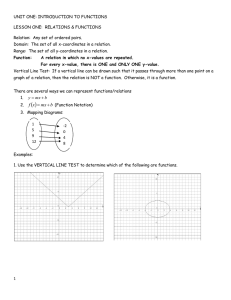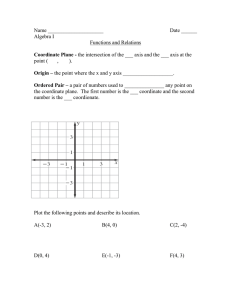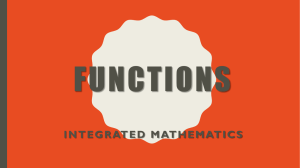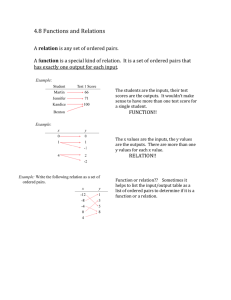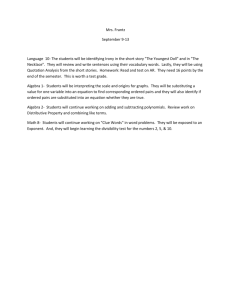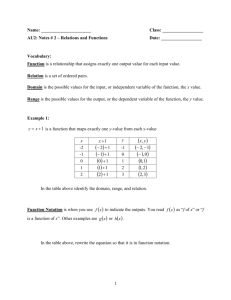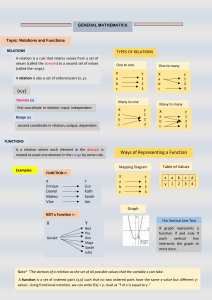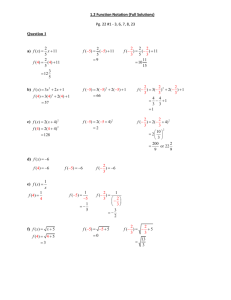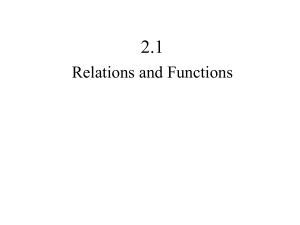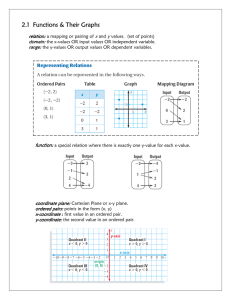Algebra II
advertisement
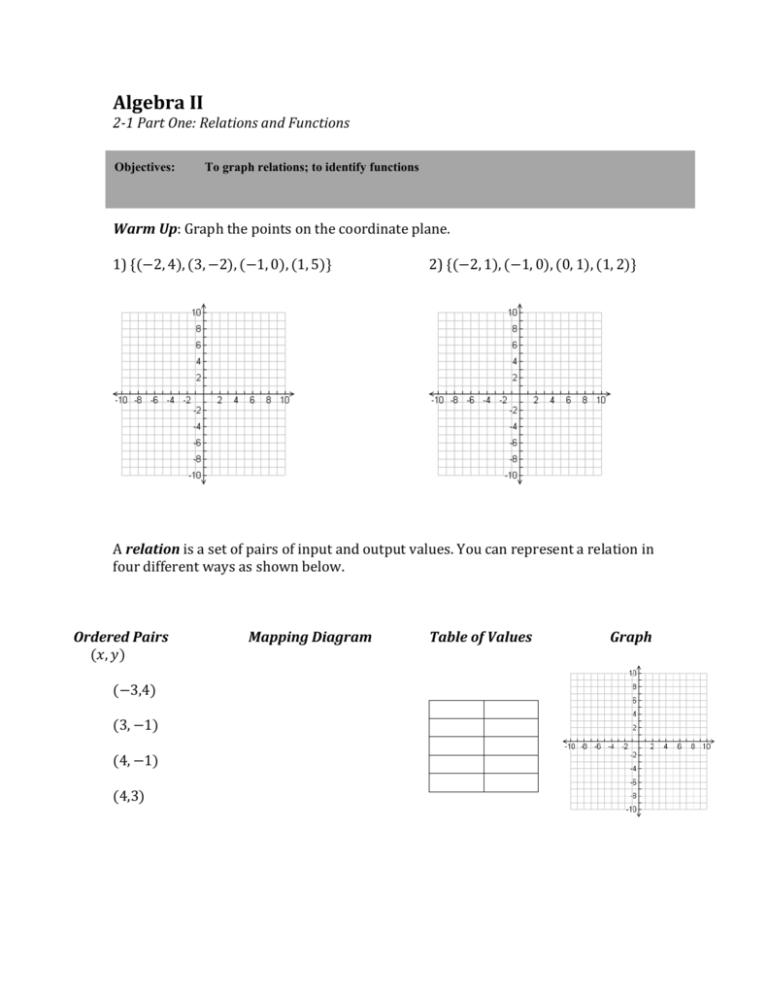
Algebra II
2-1 Part One: Relations and Functions
Objectives:
To graph relations; to identify functions
Warm Up: Graph the points on the coordinate plane.
1) {(−2, 4), (3, −2), (−1, 0), (1, 5)}
2) {(−2, 1), (−1, 0), (0, 1), (1, 2)}
A relation is a set of pairs of input and output values. You can represent a relation in
four different ways as shown below.
Ordered Pairs
(𝑥, 𝑦)
Mapping Diagram
Table of Values
(−3,4)
x
(3, −1)
(4, −1)
(4,3)
Graph
The domain of a relation is the set of inputs, also called x-coordinates, of the ordered
pairs. The range is the set of outputs, also called y-coordinates, of the ordered pairs.
Example 1) Make a mapping diagram of each of the relations. Identify the domain and
range.
a) {(−1, −2), (3,6), (−5, −10), (3,3)}
b) {(2,8), (−1,5), (0,8), (−1,3), (−2,3)}
Quick Check: Make a mapping diagram of each of the relations. Identify the domain and
range.
1) {(0,1), (1,2), (3,5), (4,8), (6,9)}
2) {(−3,12), (0,9), (2,7), (4,3), (9, −2)}
A function is a relation in which each element of the domain corresponds to exactly
one element of the range.
Example 2) Does the mapping diagram represent a function? Explain.
c)
d)
Quick Check: Is the relation a function? Explain.
3)
4)
-3
-2
0
1
4
7
1
4
6
8
-1
1
6
You can use the vertical line test to determine whether a relation is a function. The
vertical line test states that if any vertical line passes through more than one point on
the graph of a relation, then the relation is not a function.
If a vertical line passes through a graph at more than one point, there is more than one
value in the range that corresponds to a value in the domain.
Example 3) Use the vertical line test to determine if the relation is a function. Explain.
e)
f)
Quick Check: Use the vertical line test to determine if the relation is a function. Explain.
5)
6)
